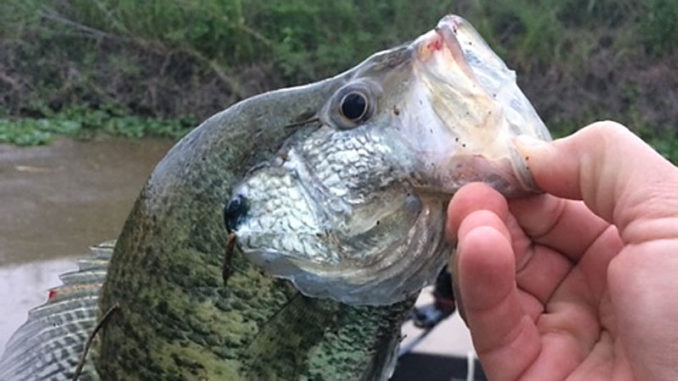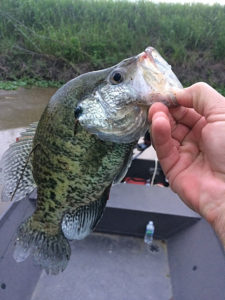
Ready to make move to spawning areas
Chet Schwing of New Iberia heads to two lakes near his home when he wants to catch early spring sac-a-lait, something he’s been doing since he was much younger, fishing with his father and grandfather.
Schwing’s go-to hotspots are Lake Dauterive and Lake Fausse Pointe, mostly Fausse Pointe. He learned the basics from his older relatives, then developed his own techniques and strategies to put slabs in the ice chest. Late winter is a great time to be out on the lake system, he said.
“My main focus in the spring in Fausse Pointe is catching sac-a-lait on the bank,” he said. “I look forward to it all year. Normally, they start up in late February, early March. For the most part, March is the best month to fish Fausse Pointe, on the spawn. That’s when I catch a majority of my fish. They’re easy to catch, very predictable on where to find them.”
Heavy rains do mess up the picture.
“If we get a big rain, the lake rises, and the fish either lock up or just move,” he said, noting many popular areas become chocolate soon after prolonged deluges.
However, the spawn comes earlier if there is a mild, relatively dry winter, he said from experience.
“February? Absolutely. No doubt about it. A majority of the fish may be in deeper water but moving in for the spawn. I’ve caught them on the bank in February,” he said.
Slab crappie
By mid-February, at least, weather and water conditions permitting, Lake Dauterive-Fausse Pointe should be giving up slabs. Average size is 10 to 12 inches with bigger sac-a-lait going 13 to 14 inches, Schwing said.
Lake winter and early spring in 2019 weren’t anything to write home about, according to Schwing. The lake system was renowned for consistently giving up late winter sac-a-lait in the 1980s and earlier, in the 1990s and 2000s. It has tapered off the past several years for unknown reasons.

“Last year was not a great year for the spawn at all; even when the days and conditions were right, fishing was slow,” Schwing said. “It was one of those off-years. I grew up in that lake as a kid. That lake has changed.”
Schwing hopes this is an up year. When he heads out in his small, aluminum boat, one of the first places he’ll check is Big Dogleg, a long, pipeline canal with plenty of structure and drains at the end of the dogleg to the left.
“If I wanted to start fishing at the earliest possible time, if I get antsy, I’m going to go to Big Dogleg,” he said. “It seems like there’s some of the clearest water in the lake, and it seems like the water temperature rises there first. Normally, the first area I would target is Big Dogleg. Sometimes, it seems they spawn in there as early as late January. One of the first places they go is to cypress trees.”
Spots to target
Some of his other choice early spots include the pipeline canals in the Texaco Field (Texaco Dogleg, Texaco Field 77, Texaco Field 11), which also tend to stay clear.
“It seems other places don’t turn on as quick,” he said.
Those other places are Marsh Field Canal, Grand Avoyelles Cove and sometimes, Sandy Cove, another clear water area that can turn on early, he said. Little Dogleg and deep borrow pits along the West Atchafalaya Basin Protection Levee also give up their share of sac-a-lait in February.
Schwing, 46, prefers the water color to be a light coffee or root beer color. “I don’t like it too clear or too brown,” he said, “(but) I’ve caught plenty in brown water.”
He targets bushes, limbs, cypress trees from 8 inches to 2 feet deep in the spring. They are one of the first places the crappie move.
Schwing doesn’t fish with hair jigs; he favors tube jigs. He has no particular favorite brand, but his favorites colors are blue/white and blue/chartreuse fished on a 1/32- or 1/16-ounce painted leadhead.


